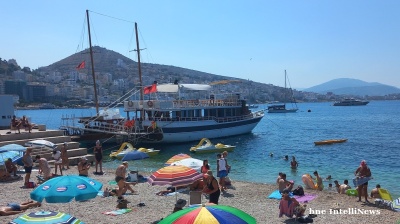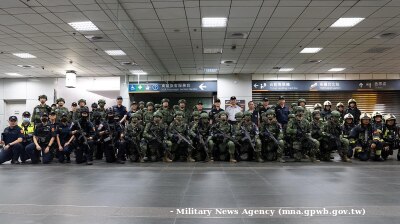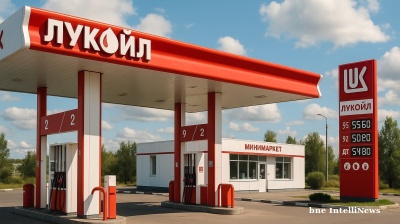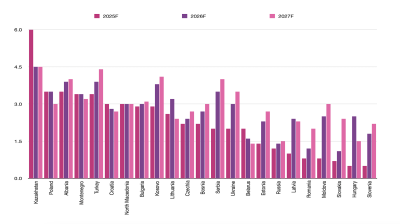Demand for industrial and logistics space is increasing in Southeast Europe, spurred on by the region’s growing importance as a nearshoring destination serving Western and Central Europe.
When the coronavirus (COVID-19) pandemic and lockdowns interrupted international trade and severed global supply chains, companies were forced to rethink their sourcing and many started to look closer to home. Southeast Europe, which is a mix of EU members and aspiring members, became an obvious choice for companies in Western and Central Europe due to its geographical proximity – including to the car manufacturing hubs of Germany and Central Europe – combined with relatively low costs and skilled workforces.
The next international upheaval caused by Russia’s invasion of Ukraine further made the case for investment into the region. Almost all the states in the region (with the notable exception of Serbia) are firmly in the Western camp. Many are Nato members and all but Serbia and Moldova announced sanctions against Russia. This fits with the recent shift from nearshoring to “friendshoring”, where companies reduce their exposure to political risk by investing into countries with shared values, as outlined by analysts interviewed by bne IntelliNews for a recent feature.
“The main drivers for demand remain the geostrategic situation that the world is in, where delays in transport from the East have caused major delays and increased prices worldwide. Now European companies are choosing to have their production closer to their European customers. If moving the entire production is not possible, then at least they are choosing to diversity part of it in SEE,” says Stela Dhami, managing partner at international real estate company Colliers in Albania.
Given the time required to make decisions and carry out investments into new production capacity, it’s relatively early days to say how far the nearshoring trend will go. However, according to World Bank data, the Western Balkans region saw a rise in net foreign direct investment (FDI) inflows in 2022 by 1.2 percentage points (pp) of gross domestic product in 2022 to 7% of GDP. The EU is the biggest source of FDI in the region, accounting for around 70% of the total.
The report said the sharp rebound in net FDI inflows since 2019 could be due to nearshoring, along with the relocation of businesses from Ukraine and Russia.
Commercial real estate services and investment firm CBRE reports that the industrial market is growing in the region and interest from tenants is strong. “After pandemic and war disturbance in supply chains, a lot of manufacturers have decided to redesign their supply chains and more often consider the CEE region as the location for their new production facilities,” said Joanna Sinkiewicz, senior director, head of industrial & logistics CEE at CBRE.
“Countries like Romania, Croatia, Serbia or Bulgaria should be strong beneficiaries of the nearshoring trend, with the advantages of human resources market-related conditions (availability, costs level, flexibility) in comparison to Western Europe and the vicinity of final sale markets.”
Low cost and stable
The region presents several positives for multinational corporations seeking manufacturing destinations in proximity to their home countries.
“Firstly, Southeast Europe serves as a natural gateway, facilitating easy access to major markets across multiple continents, enabling efficient distribution and reduced transit times,” says Sinkiewicz. “The region has a number of developed infrastructure projects enabling the entry of goods into Europe, for example the ports of Constanta in Romania, Koper in Slovenia and Rijeka in Croatia. The region offers also a cost-effective labour force, ensuring competitive manufacturing capabilities and enhanced productivity. Moreover, Southeast Europe's transportation infrastructure, including road, rail and maritime networks, complements its advantageous location, enabling seamless connectivity and smooth logistics operations throughout the region and beyond.”
Przemysław Piętak, supply chain advisory director at CBRE, agrees: “In the rapidly evolving global supply chain landscape, locating warehousing and manufacturing projects in Southeast Europe presents a compelling proposition, offering distinct advantages from a supply chain and logistics perspective. Located at the crossroads of Europe, Asia and the Middle East, this region boasts a strategic geographical position that provides numerous benefits for businesses seeking to optimise their supply chain operations.”
Dhami makes a similar point about the region’s strategic location. Elaborating on the reasons to relocate production to Southeast Europe, she says: “Southern Europe is at the crossroads of East and West and due to the recent political changes globally with the war in Ukraine and long-term effects of COVID-19, we are observing a growing interest of companies that are considering increasing their production footprint in our part of the world. With today’s market turmoil, and delay in logistics from the East, it makes sense to diversify production in various geographic areas of the world.”
Dhami points out that the Southeast European economies tend to have strong expertise in specific areas. “Each country in the SEE has differences, but their uniqueness attracts different kinds of investors,” she says. “Albania, for instance, has become a hub for the attraction of production facilities that work very closely with the Italian fashion business; Serbia, Kosovo and North Macedonia are working very closely with Austria, Switzerland and Germany.”
Regional hotspots
Romania is by far the Southeast Europe region’s biggest economy, and it also has a considerably larger population than any of its neighbours, at over 19mn.
Investments by major industrial and logistics real estate companies such as CTP in Romania illustrate the country’s attractiveness. In March, CTP announced that it had acquired an industrial portfolio of warehouses totalling over 100,000 square metres in Romania from French FM Logistic. With the acquisition, the CTP portfolio in Romania reached 2.5mn sqm of modern sustainable class A warehouses.
Logistics companies are also committing to the country. Austrian logistics company Gebrüder Weiss, one of the main players in the Romanian transport and logistics market, recently started building a new logistics terminal southeast of the capital city, in Popești Leordeni, a new project estimated to require €20mn of investments.
After Romania, the other EU markets of Bulgaria, Croatia and Slovenia are the most active, along with Serbia, the biggest economy in the Western Balkans.
Croatia and Slovenia have become more important as entry points for goods from Central Europe via ports such as Koper (Slovenia) and Rijeka (Croatia), that have become gateways for goods imports to Central Europe.
"More and more interesting for tenants are also Croatia and Slovenia – both with important ports in Rijeka and Koper that might be new entry points for goods into Europe. Together with great road infrastructure and preferable employee market, [that] causes that popularity of both counties is increasing. This sentiment is obvious to logistics and distribution, however there are also others,” says Sinkiewicz.
Along with Romania, CTP has invested in Bulgaria, including with the construction of a logistics facility spanning 15,000 sqm at CTPark Sofia Airport.
In Serbia, construction of the VGP Park Belgrade industrial park started in March, as VGP’s debut investment into Serbia.
However, there are also investments outside of those major markets. Gebruder Weiss opened in Albania in February. The Austria-based company said the move bridges a geographic divide, as it is already present in neighbouring Montenegro and North Macedonia, and allows the company to broaden its transportation links in Southeast Europe.
“There has been a sharp rise in transports to and from Albania over the past decade, with the majority of imported goods coming from the European Union,” said Thomas Moser, director and regional manager for the Black Sea/CIS regions at Gebruder Weiss, in a press release.
Retailers expand across the region
The retail sector hasn’t yet become the kind of important driver for warehouse space that it is in richer, more developed markets, though there has been an increase in demand, especially in Romania.
“The major demand drivers across the region still comes from production companies, mainly within [the] automotive industry. However, when looking at warehouse occupiers, there has been increasing interest coming from [the] electronics sector, consumer goods, logistics and from recently e-commerce,” says Sinkiewicz. “Having in mind the size of e-commerce market, it still presents a minor share in the demand pool, yet with a strong perspective. We have noted a limited number of deals also including owner occupation.”
Among the retail companies investing into new logistics and warehouse capacity in Romania are the largest Polish fashion retailer LPP, which operates brands such as Reserved, Cropp, Mohito, House and Sinsay. It announced in January that it will open a distribution centre in Romania to serve 450 stores of LPP clothing brands in Romania, Bulgaria, Hungary, Croatia, North Macedonia, Serbia and Greece. This is in keeping with the company’s change in focus to expanding in western and southern Europe after its withdrawal from Russia.
Meanwhile, Romania’s largest online retailer eMAG opted to build a a 100,000-sqm logistics centre in neighbouring Hungary in 2022 as it pursues regional expansion.
Outside Romania there have been some investments by major retailers which are expanding in the region, among them supermarket chains Lidl and Kaufland.
Kaufland Bulgaria, a subsidiary of the German retail chain Kaufland, invested BGN6.8mn (€3.5mn) to expand its logistics base near Plovdiv. According to the retailer, the warehouse the largest logistics centre in the Balkan region with a capacity of over 111,000 pallet spaces.
Lidl also expanded its logistics and distribution centre near Sofia in February, with a BGN90mn investment to add 16,000 sqm of space. Lidl's logistics center in Ravno Pole is now the company’s main hub in Bulgaria. Lidl has 115 stores in 51 Bulgaria towns, served by two logistics centres.
In EU candidate country Serbia, Lidl opened a new logistics centre in the city of Lapovo in August 2022. The logistics centre is Lidl’s second in Serbia, and is bigger than its initial centre at Nova Pazova, as it expands in the Serbian market. It will serve the Lidl stores in central and southern Serbia.
Lidl has been present in Serbia since 2018, serving not only Serbians but also large numbers of people from neighbouring countries such as North Macedonia, who used to cross the border on shopping trips before they got their own Lidl network. Now it is pursuing expansion in other countries in the region as well.
Outside the food retail sector, furniture and home goods retailer JYSK announced in February 2022 the start of an extensive enlargement project for its distribution centre in Bozhurishte, Bulgaria, reported Balkan Engineer, with an investment of €12mn.
E-commerce yet to take off
E-commerce still lags behind the rest of the CEE/SEE region, though Romania is again the frontrunner for SEE and one of the largest markets in the wider region.
“During the Covid era we observed a massive growth of e-commerce in north part of CEE (Poland & Czech Republic) and Western Europe, recently internet sale is also looking favourably on SEE region,” said Sinkiewicz.
“The popularity of e-commerce as a sale channel is growing and to meet clients expectations in reference to delivery time, e-commerce companies are requiring additional distribution centres in the region (the most popular are Romania – H&M, LPP and Bulgaria with a major food store provider). It is important to point out that the SEE region became more interesting for many of e-commerce companies, as an expansion area, after the war in Ukraine started.”
Dhami notes that e-commerce has not yet become a driving force for warehouse investment in Southeast Europe, as it lags behind Western Europe.
“Retail has changed throughout the world, it is moving towards ease of getting to the customer. In more traditional markets such as SEE where retail particularly in shopping malls, it is a relatively newer concept and customers are thus still interested in seeing and touching the product, so online retail has developed slowly,” she says.
However, she adds, “I believe however in the future, the big international retailers will move more towards this trend even in market such as ours and as a result there will be continued demand for warehousing space.”
Features

INTERVIEW: Can Albania’s tourism miracle last?
As social media brings in the crowds, the head of the Albanian Tour Operators Association tells bne IntelliNews Albania should turn away from mass-market tourism and focus on higher-value offerings.

COMMENT: Taiwan’s equality paradox - when “progressive” doesn’t mean equal
Taiwan’s insistence that women should have access to every privilege of citizenship - from political office to professional advancement - but not its responsibilities, undermines the moral foundation of its democracy.

Russian e-commerce giant Wildberries goes on a mysterious M&A spree
Russian e-commerce giant goes on M&A spree Almost a year after the controversial merger with a leading outdoor advertising firm, Russia’s leading e-commerce site Wildberries is indulging in a fresh bout of eyebrow raising deals.

US expands oil sanctions on Russia
US President Donald Trump imposed his first sanctions on Russia’s two largest oil companies on October 22, the state-owned Rosneft and the privately-owned Lukoil in the latest flip flop by the US president.




